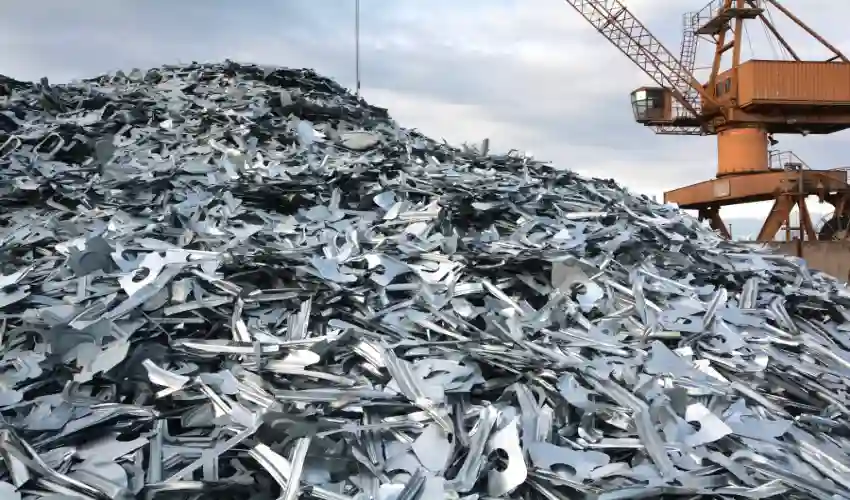
A Comprehensive Guide to Scrap Steel Recycling
Scrap steel recycling plays a crucial role in environmental conservation and resource sustainability. As industries continue to expand, the demand for steel remains high. Recycling scrap steel helps reduce energy consumption, conserve raw materials, and minimize waste in landfills. This guide provides an in-depth look at scrap steel recycling, its benefits, processes, and best practices.
What is Scrap Steel Recycling?
Scrap steel recycling is the process of collecting, processing, and reusing discarded steel materials. This process allows industries to recover valuable steel from old vehicles, construction materials, household appliances, and industrial waste. Recycling steel reduces the need for new raw material extraction, helping to preserve natural resources.
Benefits of Scrap Steel Recycling
- Environmental Benefits: Reduces greenhouse gas emissions and conserves energy compared to producing new steel from raw ore.
- Economic Advantages: Creates jobs in the recycling and manufacturing sectors while reducing production costs.
- Waste Reduction: Prevents steel waste from accumulating in landfills, thus reducing pollution.
- Energy Conservation: Uses significantly less energy than mining and refining new steel.
- Sustainable Development: Supports the circular economy by extending the lifecycle of steel materials.
Sources of Scrap Steel
Scrap Steel For Sale can be found in various sources, including:
- Industrial Scrap: Leftover materials from manufacturing plants and industrial processes.
- Construction and Demolition Waste: Steel beams, rebar, and structural components from old buildings.
- Automobiles: Old vehicles contain a significant amount of steel that can be recycled.
- Household Items: Appliances such as refrigerators, washing machines, and stoves.
- Shipbreaking: Decommissioned ships are a valuable source of scrap steel.
The Scrap Steel Recycling Process
The recycling process consists of several key steps:
- Collection: Scrap steel is gathered from various sources, including construction sites, factories, and scrapyards.
- Sorting and Processing: The collected materials are sorted based on type and quality, then processed by shredding or cutting into smaller pieces.
- Melting: The sorted scrap is melted in a furnace at high temperatures to remove impurities.
- Purification: The molten steel is refined to improve quality and remove contaminants.
- Solidification: The purified steel is cast into specific shapes, such as sheets, bars, or coils.
- Manufacturing New Products: The recycled steel is used to create new products for construction, automotive, and industrial applications.
Best Practices for Scrap Steel Recycling
To maximize efficiency and benefits, consider these best practices:
- Proper Sorting: Separate ferrous (iron-containing) and non-ferrous metals to streamline processing.
- Use of Advanced Technology: Implement automated sorting and shredding systems for better efficiency.
- Awareness and Education: Encourage businesses and individuals to participate in recycling initiatives.
- Compliance with Regulations: Follow local and international recycling standards to ensure environmental and safety compliance.
- Partner with Certified Recyclers: Work with reputable recycling companies to ensure responsible handling of scrap steel.
Challenges in Scrap Steel Recycling
Despite its benefits, the recycling industry faces several challenges:
- Contamination Issues: Mixed materials and coatings on steel can complicate the recycling process.
- Fluctuating Market Prices: The value of scrap steel can vary, affecting profitability.
- Logistical Barriers: Transportation and collection of scrap steel can be costly and complex.
- Lack of Awareness: Some industries and individuals may not fully understand the benefits of recycling.
Future Trends in Scrap Steel Recycling
As technology advances, the future of scrap steel recycling looks promising. Some emerging trends include:
- Increased Automation: AI-driven sorting and processing systems will improve efficiency.
- Sustainable Manufacturing Practices: More industries will adopt recycled steel to reduce their carbon footprint.
- Government Policies and Incentives: Many countries are introducing regulations and financial incentives to promote recycling.
- Circular Economy Adoption: A stronger focus on sustainable resource management will drive higher recycling rates.
Conclusion
Scrap steel recycling is an essential process that contributes to environmental sustainability, economic growth, and energy conservation. By understanding the benefits, sources, and processes involved, businesses and individuals can make informed decisions to support recycling efforts. As technology and awareness continue to improve, scrap steel recycling will play an even more significant role in promoting a sustainable future.
